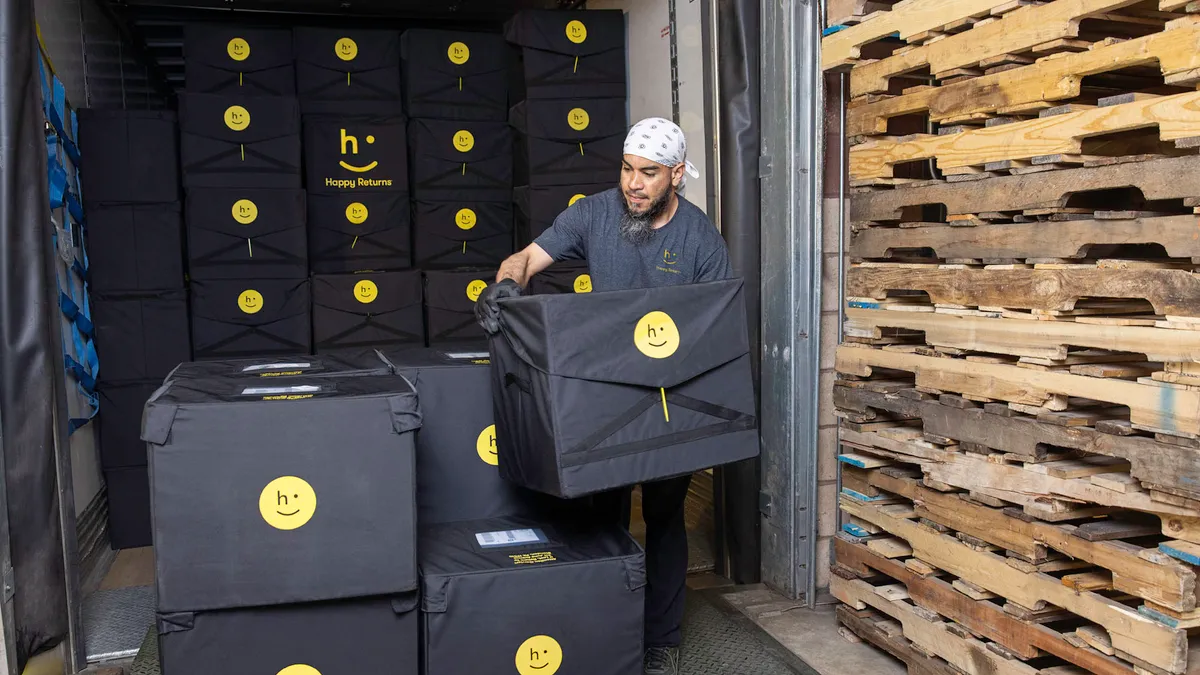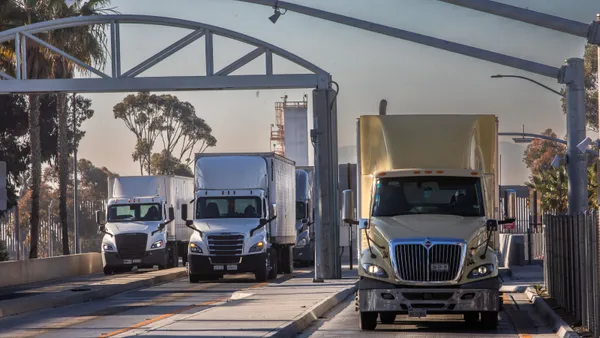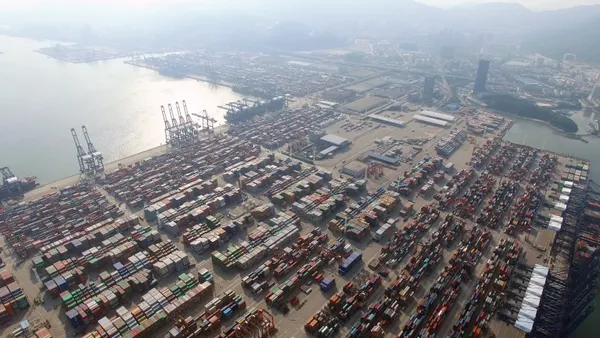With e-commerce booming, last-mile delivery has become an essential part of the customer experience. In a recent survey of 150 retail supply chain/logistics and operations executives conducted by Supply Chain Dive's studioID on behalf of Roadie, 97% said their brands consider a high-quality last-mile delivery experience to be very or extremely important.
However, the survey also revealed a significant gap between the delivery metrics that respondents believe they should expect from their last-mile delivery solutions and what they’re actually getting. That was particularly true for same-, one- and two-day delivery via non-traditional providers like the regional or on-demand delivery companies that a growing number of retailers are choosing for ultrafast, same or next-day delivery.
For example, the median expectation for on-time delivery (OTD) was 93.5%, but respondents report a median actual performance of 80% for same-day and 76% for one- to two-day delivery from their non-parcel delivery providers. Median damage rates are similar; expected damage rates were 5.8%, but respondents reported 34% for same-day and 29% for one- to two-day. These are very poor numbers.
|
Metric |
Expected Median |
Actual Median (Same-day) |
Actual Median (1─2-day) |
|
On-time delivery |
93.5% |
80% |
76% |
|
Damage rate |
5.8% |
34% |
29% |
The payoffs that come from providing a great last-mile delivery experience are substantial: Respondents report increased revenue (43%) and higher customer satisfaction/retention (41%) as the top benefits. So, it’s clear that settling for sub-par performance comes at a high price. Last-mile delivery brings plenty of challenges, but these can be overcome with solid processes, great technology and a commitment to meeting high-performance KPIs.
Key obstacles in last-mile delivery
The last mile has a well-earned reputation as the most complex part of the supply chain. Add on the pressure to meet rising consumer expectations to receive those goods next- or even same-day, and the bar is set even higher.
Delayed package pickups are the most commonly reported issue (48%) in last-mile delivery with non-traditional solutions. Respondents also cite missed delivery windows or days (39% and 38%) and missing gate codes or other critical delivery details (37%).
Ultimately, the root cause of these issues lies in the network’s drivers, operational procedures and technological infrastructure. While they may look the same from the outside, regional, local and on-demand last-mile delivery solutions differ widely in business model and how they approach the delivery.
“When you look behind the curtain, there are clear differences among your last-mile options in things like real-time visibility, picture proof of delivery, special services and many other aspects of what they do,” says Chris Grubb, head of marketing at Roadie.
For example, a deeper dive into the survey results reveals that one particular, widely used non-national parcel carrier seems to be pulling down the performance averages. That provider offers both traditionally tipped services, like food delivery, which tend to get favored by drivers over non-tipped, non-food item deliveries. As a result, these items are often late and/or damaged.
“If you’re turning the last-mile experience over to a provider competing for other kinds of jobs, even if you save a little in the front end, that’s going to cost you a lot on the back end because of the loss of customer loyalty and repeat business when deliveries don’t get where they need to go on time,” Grubb adds.
Key factors when selecting a high-performing last-mile solution
Solutions with high OTD rates, low damage rates and other measures of standout performance take deliberate steps to get there, including:
- People: Policies such as vetting attract a diverse pool of capable drivers and vehicles to the platform — as does the availability of consistent pay and the ability for drivers to choose their own deliveries — resulting in higher-quality driver performance.
- Process Efficiency: Well-honed, efficient processes that integrate easily with your existing logistics infrastructure — including options to deliver single items quickly from stores or high volumes of same-day deliveries from warehouses.
- Technology: Well-built driver matching, efficient routing and communication/visibility systems enable fast, flawless deliveries.
An overwhelming majority of survey respondents (92%) consider the choice of last-mile delivery solution very or extremely influential in their ability to provide a high-quality last-mile delivery experience. As the survey results suggest, not every company is capable of helping you achieve the quality performance that drives revenue and loyalty at a time when consumer expectations are higher than ever.
“We're seeing this one-upmanship, recognizing that getting the goods where they need to go as fast as you possibly can is almost as important as the product itself because the products can be bought in many places,” Grubb says. “That's really where the game is being won these days, in speed and predictability.”










